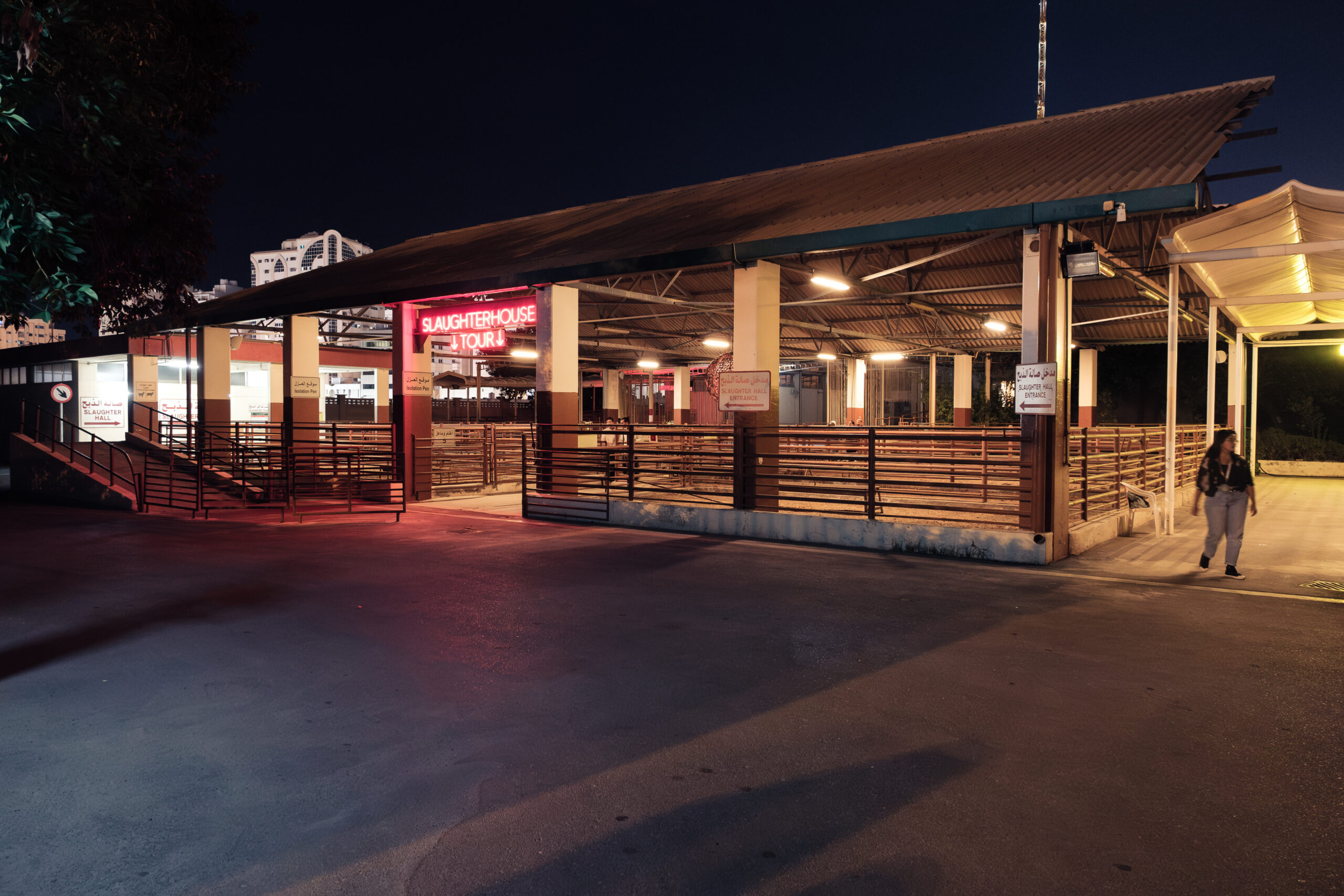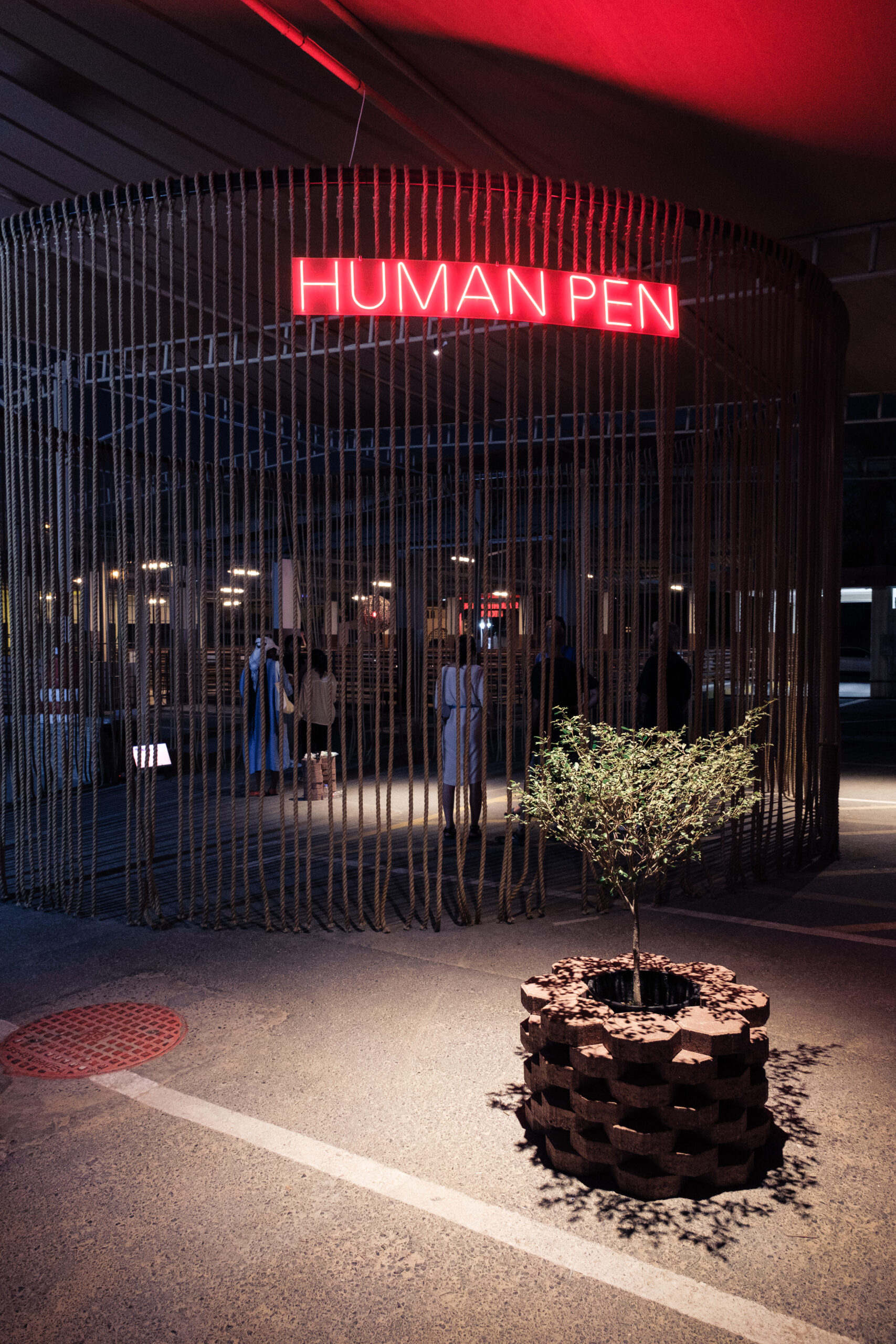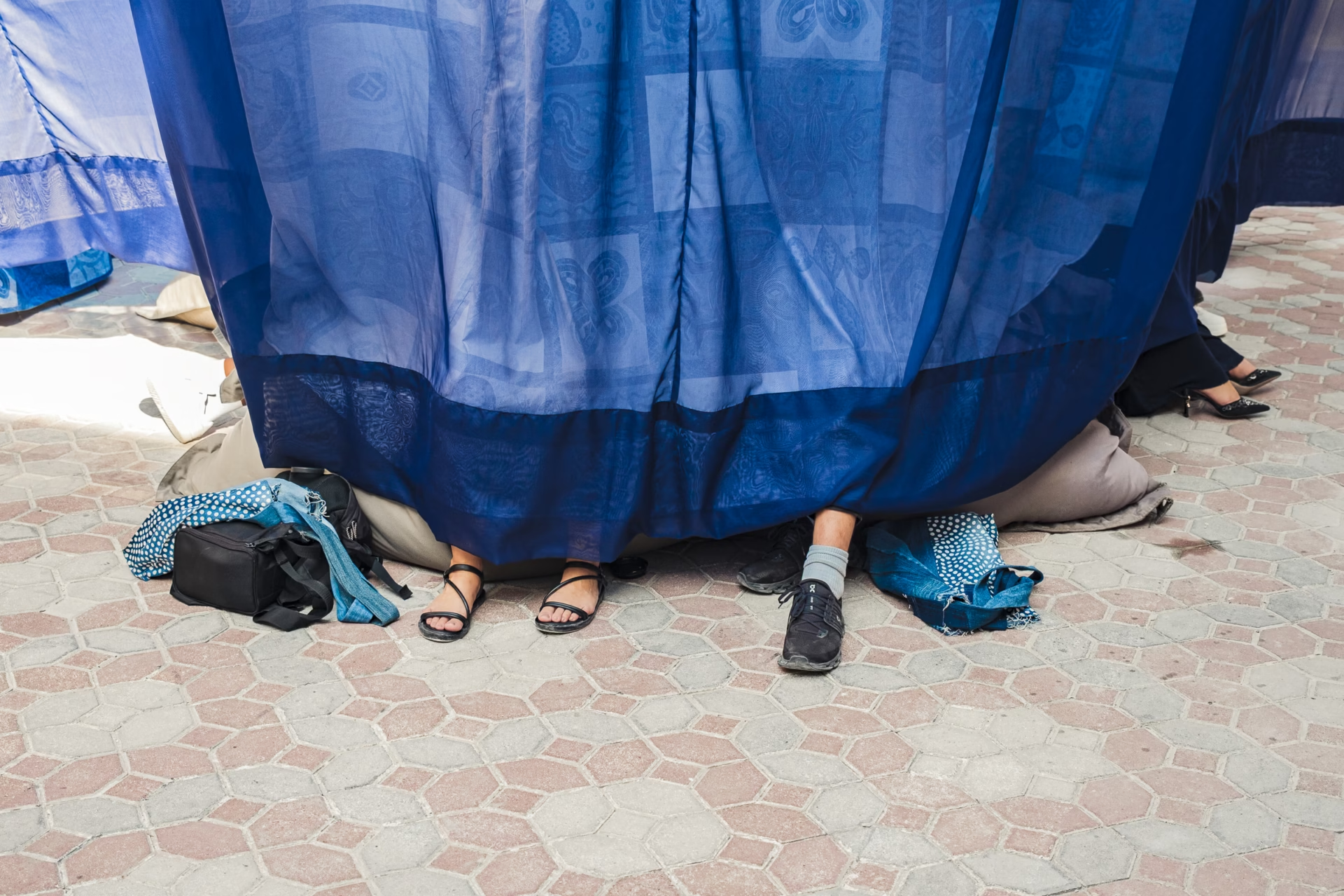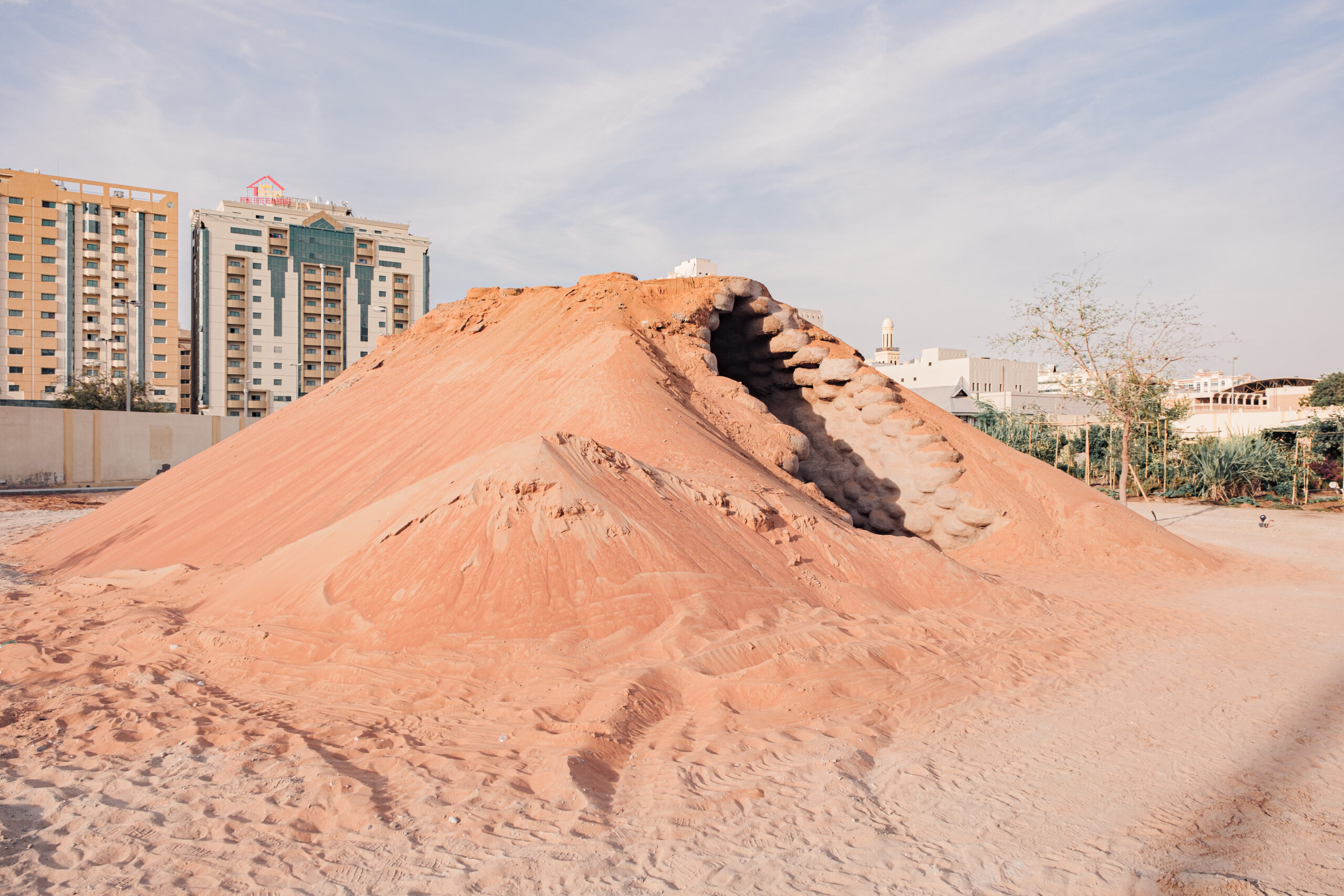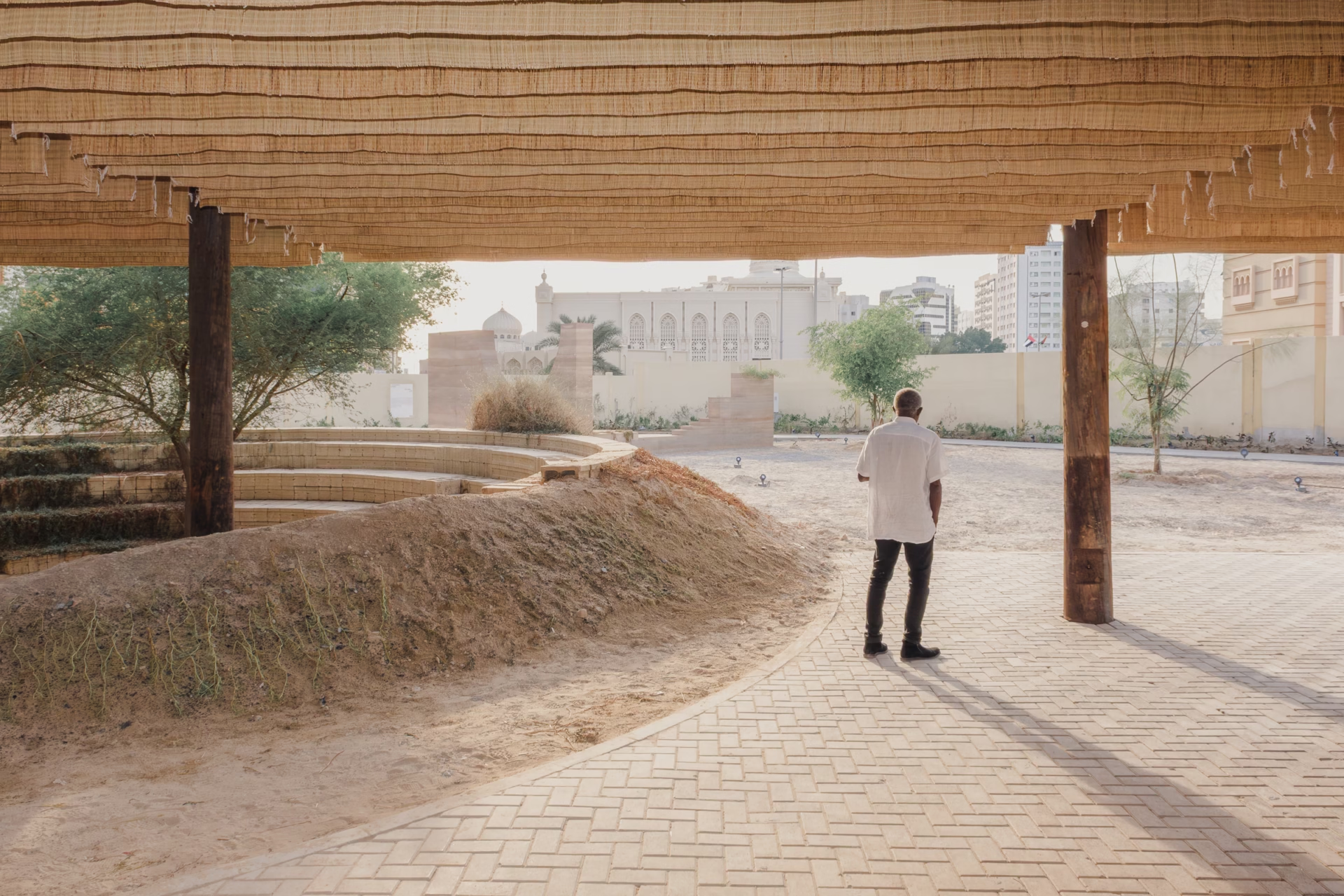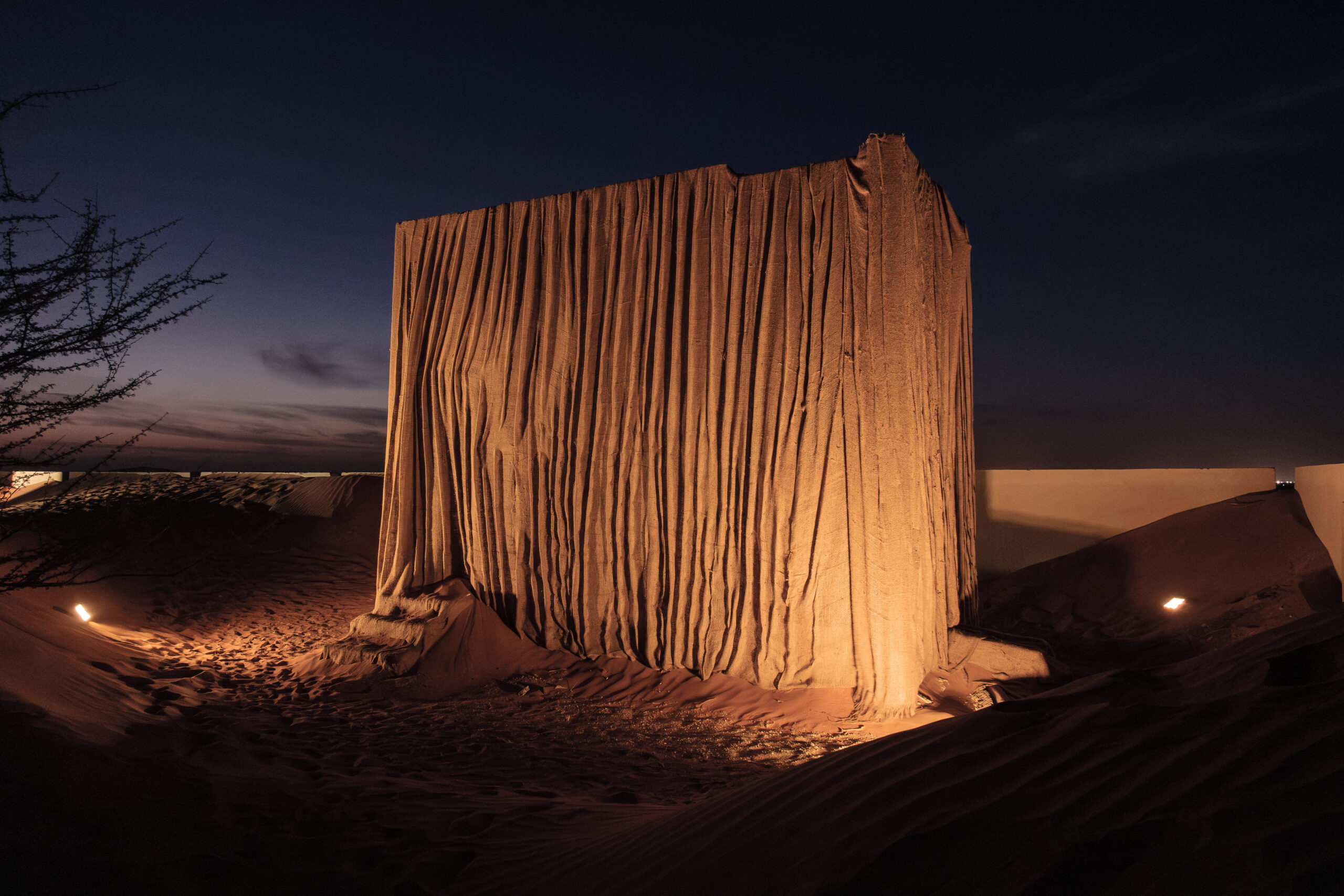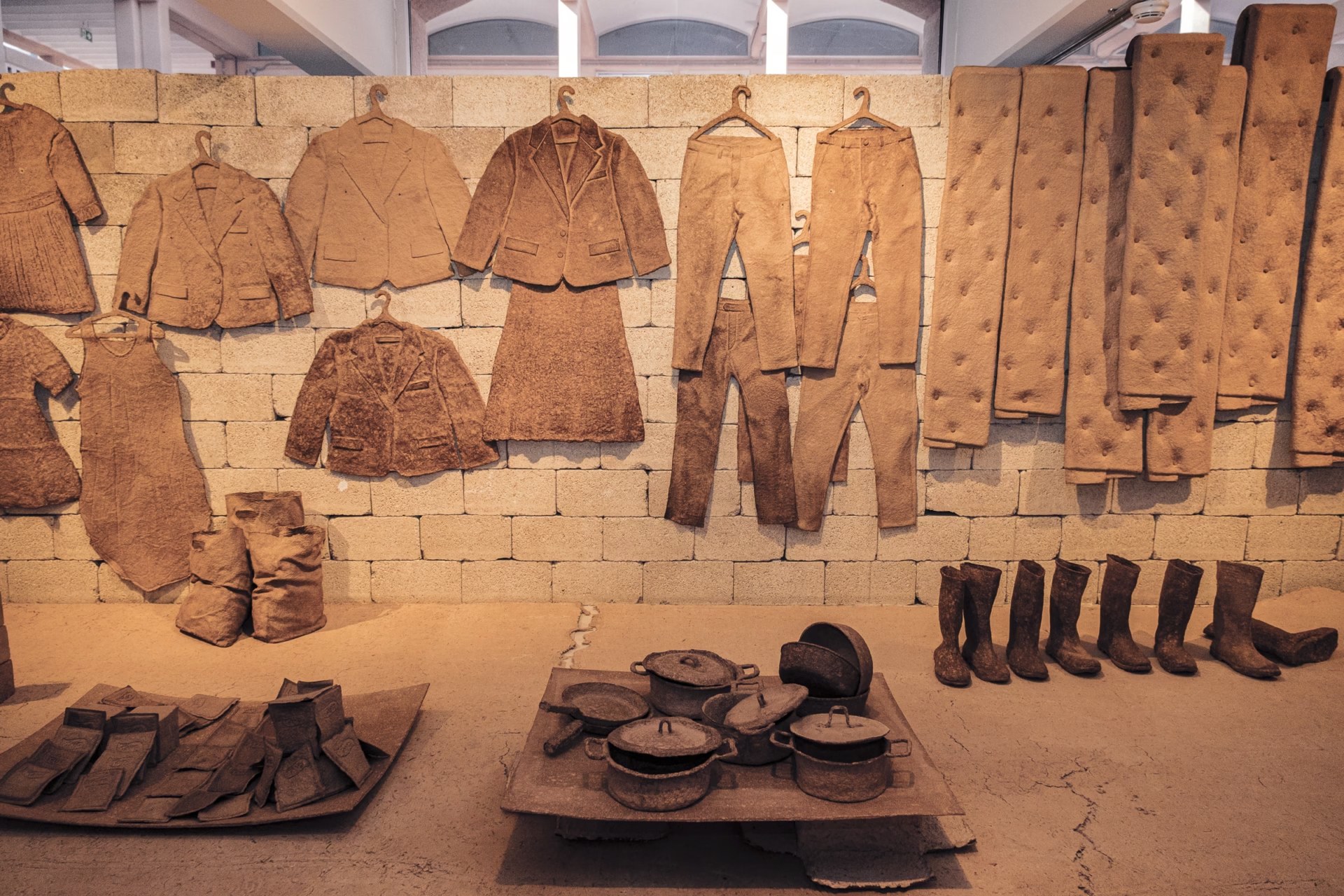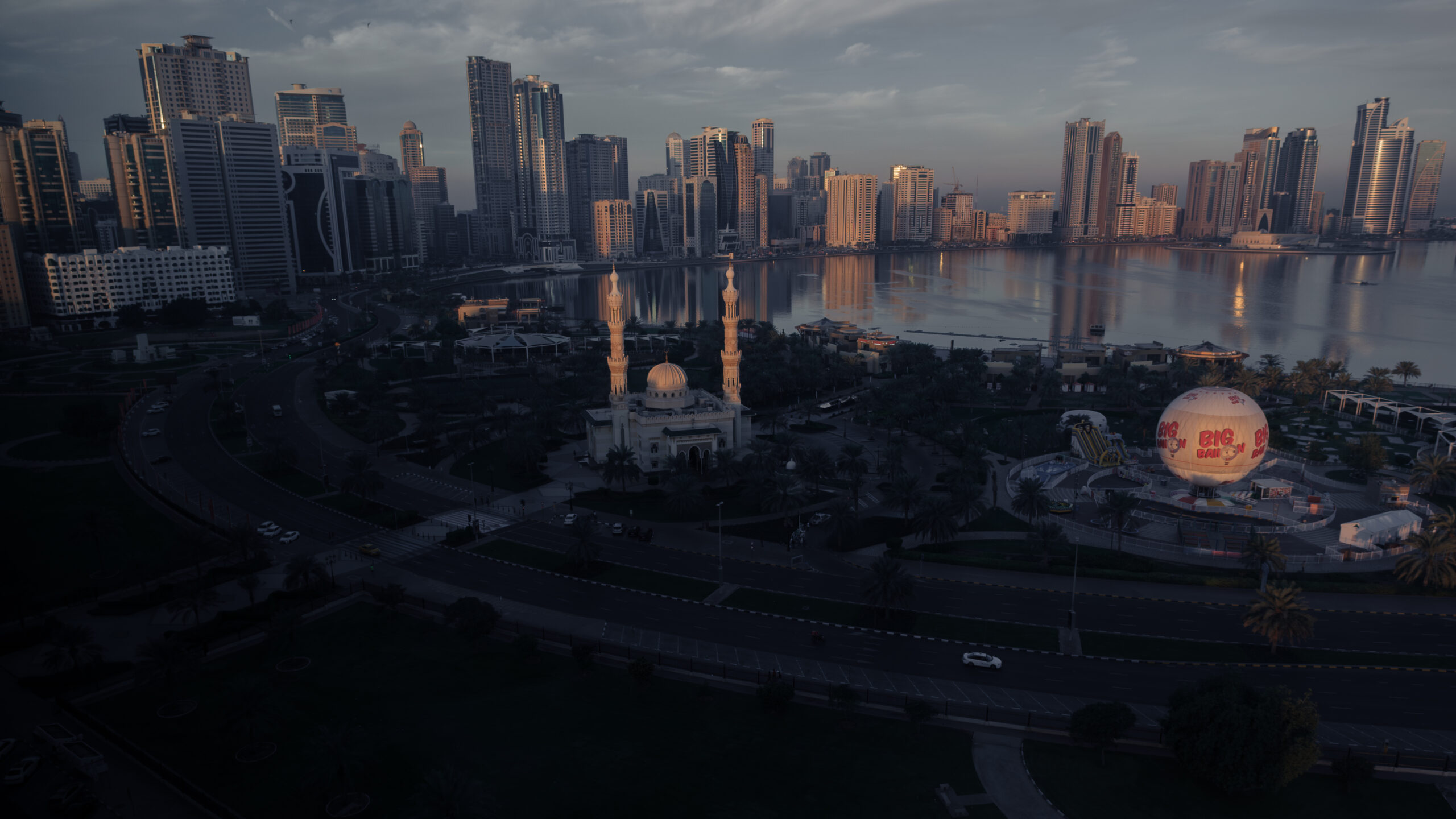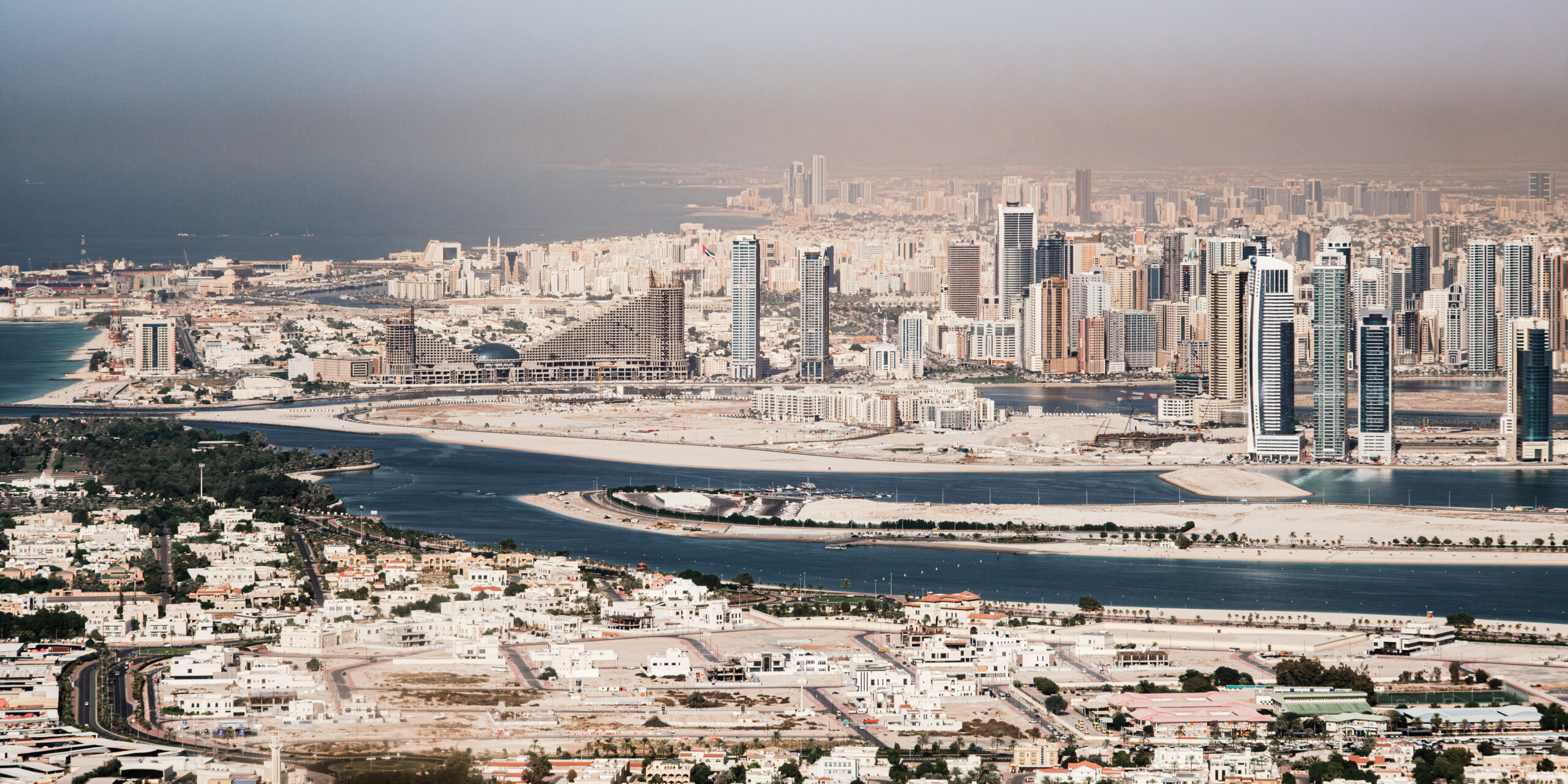
Sharjah Architecture Triennial 2023
Words and pictures for The Architectural Review
‘It took the madmen of yesterday for us to be able to act with extreme clarity today. I want to be one of those madmen,’ Tosin Oshinowo said this spring at The World Around Summit in New York before introducing her plans as curator of the second Sharjah Architecture Triennial (SAT 02). ‘We must dare to invent the future.’
These words were borrowed from Thomas Sankara who, as president of Burkina Faso in the 1980s, inverted the belittling idea of the ‘Third World’ as an opportunity to seek a ‘third way’ for Asia, Latin America and Africa, independently from the two superpowers of the US and USSR. Nearly four decades later, Oshinowo’s triennial seeks to follow his path, engendering a ‘progressive and evolving architecture’ of and by the global south that reckons with and turns against the ‘cornucopianism’, extractivism, and one-size-fits-all approaches of international modernism. Under the theme ‘The beauty of impermanence: an architecture of adaptability’, Oshinowo focuses on ‘the conditions of scarcity’ prevalent across the global south and seeks to reframe them by prioritising ‘contextual solutions, resource sharing and waste reuse’ …
… Read the full piece at architectural-review.com
‘It took the madmen of yesterday for us to be able to act with extreme clarity today. I want to be one of those madmen,’ Tosin Oshinowo said this spring at The World Around Summit in New York before introducing her plans as curator of the second Sharjah Architecture Triennial (SAT 02). ‘We must dare to invent the future.’
These words were borrowed from Thomas Sankara who, as president of Burkina Faso in the 1980s, inverted the belittling idea of the ‘Third World’ as an opportunity to seek a ‘third way’ for Asia, Latin America and Africa, independently from the two superpowers of the US and USSR. Nearly four decades later, Oshinowo’s triennial seeks to follow his path, engendering a ‘progressive and evolving architecture’ of and by the global south that reckons with and turns against the ‘cornucopianism’, extractivism, and one-size-fits-all approaches of international modernism. Under the theme ‘The beauty of impermanence: an architecture of adaptability’, Oshinowo focuses on ‘the conditions of scarcity’ prevalent across the global south and seeks to reframe them by prioritising ‘contextual solutions, resource sharing and waste reuse’ …
Read the full piece at architectural-review.com
